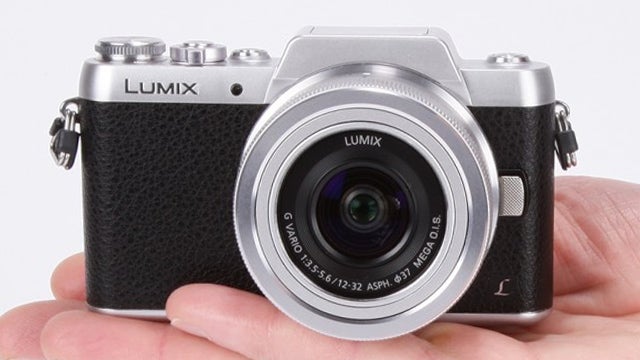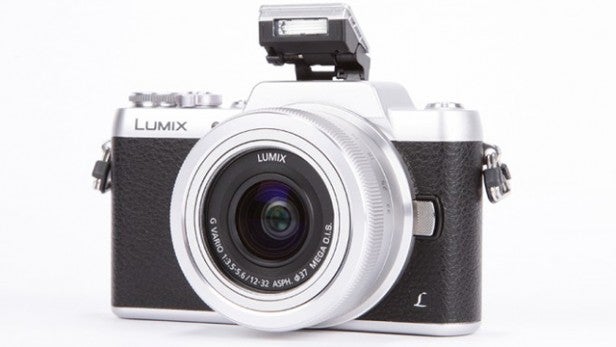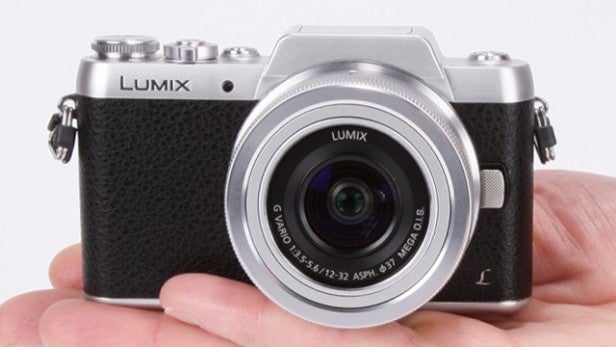Panasonic Lumix GF7 Review - Performance, Image Quality and Verdict Review
Performance, Image Quality and Verdict
A selfie-loving compact system camera

Sections
- Page 1 Panasonic Lumix GF7 Review
- Page 2 Performance, Image Quality and Verdict Review
Panasonic Lumix GF7 – Features
While the Panasonic Lumix GF7 makes several improvements across the board (aside from flash power) compared to the GF6, it doesn’t have many seriously notable new features. Panasonic seems to be relying quite heavily on the new look to reel in buyers.
It has Wi-Fi, but lacks NFC, something that you do get in the now-cheaper GF6. Optical image stabilisation is not built into the body either. The 12-32mm kit lens has OIS, but that’s not going to be much use if you’re buying the GF7 body-only.

During testing what annoyed the most, though, was battery life. It’s rated at just 230 shots, making it fairly easy to drain down in an afternoon’s shooting. That’s significantly worse than the Sony Alpha 5100’s 400-shot battery or the Olympus E-PL7’s 320-shot battery. Perhaps this is the real price of a camera this thin and light.
Panasonic Lumix GF7 – Performance
While you can tell the Lumix GF7 isn’t close to the top of Panasonic’s CSC range in-hand, its shooting performance is much less revealing. Its contrast detection focusing system is very fast and accurate even in fairly poor lighting, and its burst performance is respectable.
When the focus is locked you’ll get 5.8fps out of the GF7, dropping to 5fps with autofocus engaged. The buffer runs out after seven shots if you’re shooting RAW files, but stick to JPG and you can carry on until your memory card is filled.
For real casual shooting you can use the touchscreen to tap-to-focus, and if you’re not especially keen on the idea of manual control through physical dials and buttons, the touchscreen interface hasn’t been dumbed down from Panasonic’s more expensive models, giving you solid control.
As usual, there are plenty of creative filters to try out too.
It’s not all entirely rosy, though. We found the Panasonic Lumix GF7’s picture preview gallery to be a pain to use. It’s slow to load, and doesn’t seem to render images at high enough resolutions when you zoom in to check on the quality of the shot.
The panorama mode is poor too. It’s very picky about how the camera is moved during capture, and the results are patchy and inconsistent. Poorly-stitched images and exposure issues are to be expected. This is particularly disappointing in a camera that should be making things easier, not more fiddly.
However, Panasonic may be able to address these issues with a firmware update. Other more central aspects fare much better. First, the 1,728-zone metering system provides the Panasonic Lumix GF7 with well-exposed shots. We only had to alter the exposure in fairly extreme lighting conditions.
It also has an electronic shutter, enabling fully silent operation and shutter speeds up to an incredibly fast 16,000th of a second. That should prove useful if you’re planning on shooting with fast prime lenses at wide apertures on ultra-sunny days.
Panasonic Lumix GF7 – Image Quality
Despite having a sensor that sounds like the GF6’s, with 16 megapixels and a Micro Four Thirds form, the GF7 does seem to have significantly improved image quality. In our lab tests, the camera managed 12.7EV dynamic range at base ISO, up from 11EV when we first tested the GF6 a couple of years ago.
Detail capture is slightly improved too. Performance may only be on-par with other 16-megapixel CSCs of today, but it’s good to see Panasonic is not lagging behind.
Image quality is generally very good, with nice-looking JPG processing leaving you with nicely saturated, natural-looking photos without any post-processing (necessarily) required. The Panasonic Lumix GF7 has a native ISO range of 200-25,600, and you’ll get good results up to ISO 1600. From 3200 and above, the results start getting a bit noisy and, as expected, ISO 12,800 and 25,600 are best left for emergencies only. At well as increased noise, dynamic range deteriorates steadily, becoming more obvious at ISO 3200 and above.
Could you get better performance from an APS-C rival? At higher ISOs yes, but then the Panasonic Lumix GF7 is a package, not just a camera that is all about image quality. As a slightly more casual model, we’re happy with the performance.



Panasonic Lumix GF7 – Video
The Lumix GF7 doesn’t push video too hard either, despite Panasonic being the main pioneer of 4K video CSCs with cameras such the GH4. You can capture video at up to 1080p 60 frames, in MP4 or AVCHD formats.
However, there’s no external microphone input and no hotshoe either. It’s clearly not designed to be a videographer’s dream camera.

Should I buy the Panasonic Lumix GF7?
The Panasonic Lumix GF7 is a solid update to the Lumix GF6. It may alter the design more than anything else, but when what results is a highly pocketable and easy-to-use camera that offers reasonable manual control potential, we don’t mind too much.
Image quality is very good and for the most part it’s a joy to use. However, there are some problems to address. The image preview function is poor and the panorama mode doesn’t work as well as it should. Some patience is required, but these issues may be fixable.
Verdict
It’s not particulary dramatic or forward-looking, but the Panasonic GF7 is a highly convenient little CSC with very good image quality.
Trusted Score
Score in detail
-
Value 8
-
Design 8
-
Features 8
-
Image Quality 8
-
Build Quality 7
-
Performance 8



